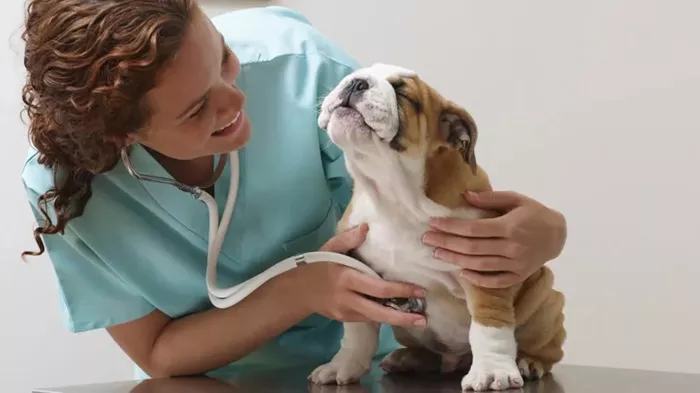As a pet owner, it’s only natural to want to provide the best care for your furry friend, but sometimes unexpected veterinary expenses can add up quickly. That’s where pet insurance comes in to ease the financial burden. But what exactly can you claim on pet insurance? Understanding your policy and knowing what’s covered will help you make the most of your pet insurance.
In this article, we’ll explore the various aspects of pet insurance and explain what you can claim for. From emergency surgeries to routine checkups, we’ll break down everything you need to know. So, let’s dive in and uncover the benefits of pet insurance claims!
What is Pet Insurance?
Before we explore the specifics of what you can claim on pet insurance, it’s important to understand what pet insurance actually is. Pet insurance is a type of coverage that helps pet owners pay for medical expenses related to their animals’ health. It works similarly to human health insurance, where you pay a monthly premium and in return, the insurance company covers certain veterinary costs.
There are different types of pet insurance policies, such as accident-only, time-limited, and lifetime coverage. Each policy offers different levels of coverage, so it’s crucial to know what your plan includes.
What Types of Claims Are Typically Covered by Pet Insurance?
Pet insurance policies vary, but most offer coverage for the following types of claims:
1. Accidents and Injuries
If your pet is involved in an accident or sustains an injury, such as being hit by a car, falling, or getting into a fight, most pet insurance policies will cover the costs of treatment. This may include emergency surgery, hospitalization, pain management, and medication. However, it’s important to note that you may need to meet an excess or deductible before the insurance kicks in.
2. Illness and Disease
In addition to accidents, pet insurance typically covers illnesses and diseases. This includes conditions like infections, cancer, diabetes, and heart disease. Some insurance providers may also cover chronic conditions, which are ongoing illnesses that require long-term treatment. Be sure to read the policy details, as some insurers may have exclusions for pre-existing conditions.
3. Surgeries and Operations
Pet insurance usually covers surgeries, from routine procedures like spaying or neutering to more complex surgeries needed for injuries or illnesses. This includes diagnostics, anesthesia, and post-operative care. However, it’s important to check your policy’s terms to see if there are any limits on surgical coverage.
4. Prescription Medications
When your pet is diagnosed with a health condition that requires medication, your insurance plan may cover the cost of prescriptions. Some policies also cover the cost of ongoing medication for chronic conditions like arthritis or diabetes, ensuring your pet receives the necessary treatment without the high costs.
5. Diagnostic Tests
Pet insurance can help cover the cost of diagnostic tests like blood work, X-rays, ultrasounds, or MRIs. These tests are often necessary to diagnose illnesses or injuries and determine the best course of treatment. Make sure to check your policy’s specifics, as some may have limits or exclusions on certain types of diagnostics.
6. Emergency Care and Hospitalization
In the event of an emergency, pet insurance often covers the cost of immediate care and hospitalization. This could include a visit to the emergency vet, overnight stays, or intensive care. Emergency care is essential for pets that are seriously injured or ill, and having pet insurance can help reduce the financial burden of these situations.
7. Alternative Therapies
Some pet insurance providers will also cover alternative treatments, such as acupuncture, physiotherapy, or hydrotherapy, if recommended by a veterinarian. These treatments can be used to manage pain or help with rehabilitation after surgery or injury.
8. Behavioral Treatment
Pet insurance policies may cover behavioral therapy if your pet is suffering from issues like anxiety, aggression, or compulsive behaviors. However, this type of coverage is not always included and may depend on the specific policy and insurance provider.
9. Dental Treatment
Dental care can be a costly aspect of pet ownership, and many pet insurance plans offer coverage for dental procedures. This includes treatments for gum disease, tooth extractions, and sometimes even teeth cleaning. However, most policies only cover dental treatment if it is related to an illness or injury, rather than routine dental care.
10. Routine and Preventative Care
Some pet insurance policies also offer coverage for routine and preventative care, such as vaccinations, flea and tick treatments, annual check-ups, and wellness exams. These types of claims help maintain your pet’s overall health and prevent serious health issues in the future. However, not all policies include this coverage, and if they do, it may be an add-on or optional coverage.
What Doesn’t Pet Insurance Cover?
While pet insurance can provide significant coverage for your pet’s health needs, there are some exclusions you should be aware of. Here are a few common situations that pet insurance typically doesn’t cover:
1. Pre-Existing Conditions
Most pet insurance policies do not cover pre-existing conditions. This means that if your pet has been diagnosed with a health issue before the policy begins, the insurance company won’t pay for treatment related to that condition. However, some insurers may offer partial coverage for pre-existing conditions if your pet’s condition improves after a certain period.
2. Routine Care (Without Additional Coverage)
Routine and preventative care, like vaccinations and regular check-ups, may not be included in standard pet insurance policies. However, some insurers offer these benefits as part of an optional add-on or separate plan.
3. Cosmetic Procedures
Pet insurance typically doesn’t cover cosmetic procedures or treatments that are not medically necessary. This includes things like elective surgeries or treatments for non-health-related reasons, such as ear cropping or tail docking.
4. Pregnancy and Birth-related Costs
If your pet is pregnant or giving birth, most pet insurance policies do not cover the costs of pregnancy, labor, or delivery. However, if complications arise during the pregnancy that require medical intervention, some policies may cover the associated treatment.
5. Some Breeds and Genetic Conditions
Certain breeds may be more prone to specific genetic conditions, such as hip dysplasia or breathing issues. While pet insurance may cover treatment for these conditions, some insurers may exclude them or impose waiting periods before coverage begins. It’s essential to check with your provider to understand breed-specific exclusions.
How Do Claims Work?
Making a claim on your pet insurance can vary depending on your insurer, but the general process is as follows:
Visit the Veterinarian: When your pet needs treatment, visit a licensed veterinarian. You will need to pay for the treatment upfront, and the vet will provide you with a detailed invoice.
Submit the Claim: Once you’ve paid the bill, you can submit a claim to your insurance provider. This often involves filling out a claim form and providing a copy of the invoice or treatment record.
Claim Assessment: The insurance company will review your claim and assess whether it meets the policy’s terms and conditions. They may request additional information from your vet if needed.
Payment: If your claim is approved, the insurance provider will reimburse you for the eligible costs. This is typically done either directly to you or through a vet’s direct payment system.
What Can You Do to Maximize Your Pet Insurance Coverage?
To ensure you get the most out of your pet insurance, here are some tips:
Choose the Right Plan: Not all policies are the same, so choose one that aligns with your pet’s needs. Look for a plan that covers accidents, illnesses, and any specific treatments your pet may require.
Read the Policy Details: Always read the fine print to understand your coverage, including any exclusions or limitations.
Use Preventative Care: Take advantage of routine care coverage if included in your plan. Regular check-ups can help identify health issues before they become serious.
Keep Detailed Records: Save all veterinary invoices, medical records, and treatment plans. This will make it easier when submitting claims and help ensure you receive the correct reimbursement.
Avoid Gaps in Coverage: Ensure that your policy stays active and up to date to avoid lapses in coverage. This can be crucial in the event of an emergency.
Conclusion
Pet insurance can offer peace of mind by covering a variety of medical expenses for your pet, but understanding what you can claim is essential to maximizing the value of your policy. From accidents and illnesses to surgeries and prescription medications, many costs can be reimbursed through pet insurance. By carefully reading your policy and knowing what’s covered, you can ensure that you’re prepared for whatever health issues your pet may face.
Related topic:
What Are the Types of Home Insurance in the UK?















